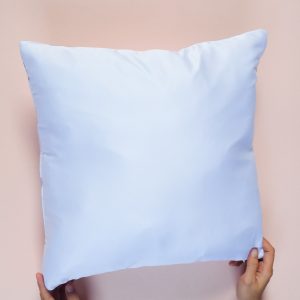 Most of us will spend over a third of our life in bed. Those 8+ hours per day can be the focus of frustration when you’re suffering from back pain and unable to get comfortable. Worse yet, you may fall asleep but awaken with back pain worse than the night before.
Most of us will spend over a third of our life in bed. Those 8+ hours per day can be the focus of frustration when you’re suffering from back pain and unable to get comfortable. Worse yet, you may fall asleep but awaken with back pain worse than the night before.
This brings us to one of the most common questions in our office: What is the best position to sleep in with back pain?
The unfortunate answer is that there is no perfect position for every type of back injury. You should always consult with your local chiropractor or physical therapist to determine the specifics of your case. However, we’d like to outline a few tips that you can do to ensure a better night’s rest while preventing re-injury.
CHOOSING THE RIGHT BED & PILLOW
 The age and quality of your mattress can play a significant role in how you fall asleep and awake in the morning. A broken-in, worn-out mattress can contribute to both back and neck pain. Most experts agree that traditional mattresses should be replaced every 5-8 years and not exceed ten years of use.
The age and quality of your mattress can play a significant role in how you fall asleep and awake in the morning. A broken-in, worn-out mattress can contribute to both back and neck pain. Most experts agree that traditional mattresses should be replaced every 5-8 years and not exceed ten years of use.
You can read an entire section on mattresses by clicking HERE. But this list encompasses some of the significant points:
- Choose a medium to firm model. Excessively soft or hard surfaces can aggravate neck or lower back pain.
- Avoid pillow-top, or keep the pillow-top relatively thin. An overly plush topper breaks in long before the mattress springs and can shorten your mattress’s life.
- Always replace the boxspring foundation when replacing the mattress
- Select a pillow that will hold your head in a neutral position on your side or back. For side sleepers, this means a pillow that fills the gap between your shoulders and head
- Avoid excessively thick or multiple pillows
SLEEP POSTURE
Your sleeping position plays a significant role in how you sleep and the recovery rate of your condition.
- Finding the perfect sleep position usually takes time and some experimentation. Still, two of the most popular are sleeping on your side with a pillow between your knees or on your back with a pillow underneath your knees.
- While stomach sleeping is often discouraged, some injuries or conditions (particularly younger patients suffering from a disc bulge or sciatica) may find stomach sleeping the most comfortable.
GETTING IN & OUT OF BED
Here are a few tips that should make getting in and out of bed easier:
- To lie down: Sit on the edge of the bed with your arms by your side and tilt your body sideways onto the bed. Be sure to maintain the bend of your knees at 45 degrees as you do this. Lastly, bring your feet into a lying position and roll onto your back.
- To get up: From a side-lying position with your knees bent, push your body upright into a sitting position while swinging your legs over the edge of the bed as you rise.
GENERAL SLEEP HABITS
 Getting a good night’s rest is one of the most important things we can do for our health (both physically and mentally). Researchers recommend adults sleep between 7 and 9 hours per night. Slight deficiencies can cause problems ranging from decreased athleticism, diminished brain function, increased inflammation, and a greater likelihood of getting sick. Studies suggest that those who sleep only 6 hours per night are four times more likely to catch a cold than those who sleep seven or more hours.
Getting a good night’s rest is one of the most important things we can do for our health (both physically and mentally). Researchers recommend adults sleep between 7 and 9 hours per night. Slight deficiencies can cause problems ranging from decreased athleticism, diminished brain function, increased inflammation, and a greater likelihood of getting sick. Studies suggest that those who sleep only 6 hours per night are four times more likely to catch a cold than those who sleep seven or more hours.
Here is a list of tips to help you achieve a better night’s rest:
- Limit screen time before lying in bed. The blue light produced by computers, TVs, and phones can reduce melatonin production and significantly affect sleep1. Try reading a book before bed instead.
- Eat your last meal 3-4 hours before bedtime. This meal should limit heavy, spicy, or high-fat foods.
- Limit caffeine in the afternoon. Caffeine has a half-life of 6-9 hours, meaning it’ll remain in your system long after your last cup.
- Stick to a sleep schedule – retiring and arising at the same time each day, including weekends.
- Choose 100% cotton sleep clothes over synthetic materials like polyester
- Some research has suggested that your REM sleep (the “Deep” sleep) improves when your mattress is oriented so that your body is aligned North and South as opposed to East and West
- Most people generally sleep best in a cool room, between 60 and 67 degrees Fahrenheit
- If it is within your budget, you may consider a temperature control device, like a Chili Pad, to keep your bed at the ideal temperature.
Whether seeking relief from chronic pain or simply aiming for optimal health, your Livonia chiropractor guides you every step of the way. Contact our office to schedule an appointment by Clicking Here or giving us a call today: 734-427-6333
If you’d like a PDF copy of this information, click HERE.

